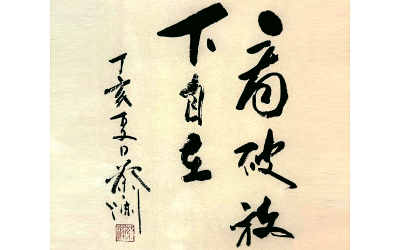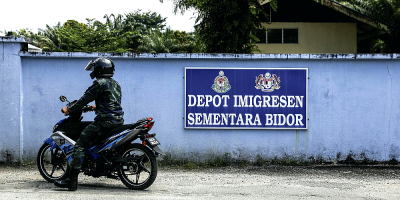Rustic country life makes a perfect theme for travelling. Tucked amidst the narrow streets and alleys of these tiny towns and villages are innumerable old stories to be uncovered — the old neighbours, old abodes, time-honoured antiques, old shops and coffeehouses, old wayang stages, opium dens and so on and on — awaiting us to explore and reminisce down the memory lane.
Of course, there are always this bunch of stubborn old heads that explains why the outdated oil lamps are still burning to this day. The thing is, they are at the advanced stages of their lives and their much cherished old flavours or stuff may be gone forever if no one else is going to preserve or take care of them. An invaluable piece of cultural legacy could be lost forever.
As a matter of fact, almost all the kids of the contemporary generation have never seen a charcoal iron once used by their great grandparents, and definitely have no idea how they were sold here as coolies back in those years, or braved the rough seas to sail from China to make a meagre living in an unfamiliar place thousands of miles from home.
Arriving here empty-handed, it wasn’t easy for these early migrants to build a new life and home and bear children here, and pass down the ancestral traditions to their posterity.
Fortunately in each of these settlements and villages there is always this group of dedicated people, old and young, who would uncompromisingly safeguard and defend such traditions for the sake of the future generations.
At the privately run Gopeng Museum along Eu Kong Street in Gopeng, Perak, we met the 82-year-old curator Phang See Kong whose every gesture and move portrays the unmistakable and unique trait of a proud Gopeng-nian. Such selfless social workers deserve our utmost respect.
From what I understand, Phang and a group of other senior residents of the town have over the past several decades tirelessly collected old pictures of the town for the museum while taking up the insurmountable challenges of preserving its heritage buildings and cultural relics. All this is for Gopeng, as part of the effort in compiling the history of Malaysia’s towns and villages, they say.
Phang gave us a narration of the town’s untold little tales and stories: There would be no Gopeng without the tin ore. Pointing to the yellowed pictures hung on the wall, he related, “The early immigrants from Foshan in China’s Guangdong province began to come here to work at the tin mines during the colonial times, followed by the Mandalings from Sumatra.
Besides large scale tin-mining activities, the mining tycoons also built 15 km of water pipes using elephants for transporting the building materials. Unfortunately, these water pipes have yielded to modern-day developments today.

Phang continued, “Without Eu Kong, Gopeng would not have come into being.” Eu Kong started Eu Yan Sang’s first herbal medicine shop in Gopeng in 1879, and his son Eu Tong Sen was a local tycoon manning a wide range of businesses from banking, tin-mining, rubber plantation, real estate development, transportation services, Chinese medical halls to entertainment. The Gopeng museum building that we see today was actually donated by the posterity of Eu Kong who used the building as a horse stable.
The prosperity of Gopeng more than a hundred years ago gave rise to mushrooming opium dens, brothels and cinemas and a burgeoning entertainment scene. Bear in mind that the entire Kinta Valley, including the tin mines in Gopeng, was the economic powerhouse of British Malaya.
With the global tin prices hitting a new high of US$35,000 per ton, we couldn’t help but think back to those good old days enjoyed by Gopeng’s tin tycoons. And from the words and expressions of Phang, I could feel the pride of this third generation Gopeng resident.
The old stories continued at another privately run establishment in town, Koo Fung Bistro. Speaking into a loudspeaker, the 60-year-old narrator gave an in-depth account of all the things on display, including an antiquated rice noodle pedlar cart.
Earlier, when we were having lunch at the tea garden inside the 300-acre Gaharu Valley where the average age of agarwood trees is more than 30 years, the second generation business owner specially offered us the shop’s signature yong tau fu rice noodle, a must-try local delicacy for all visitors to Gopeng that has become synonymous with the town gastronomically.
Notably, the Gopeng Hup Teck Soy Sauce Factory is currently run by its third generation owner. Both he and his predecessor have been insistently committed to the traditional way of manufacturing soy sauce which has become a traditional flavour all local residents take deep pride in.
Like other small towns scattered across the country, Gopeng finds itself slowly drifting into public oblivion, exacerbated by the collapse of the tourist industry as a consequence of the pandemic. This has made it all the more difficult to restore these private museums. The Gopeng Heritage House nearby has just been permanently shuttered!
Having said that, these tireless social workers remain persistent in devoting themselves to the preservation of the town’s priceless heritage, as they continue to relate the extraordinary tales of the former mining town taking place over the past one century and a half so that this invaluable piece of folklore can be passed down from generation to generation.
If you happen to travel up or down the country one of these days, do make a detour to Gopeng to visit the major tourist attractions around town, among which Gua Tempurung and whitewater rafting are definitely not to be missed.
As the night falls, you can choose to check in the Semantra Nature Resort boasting 500 acres of lush palm and rain forests and enjoy a deep sleep immersed in nature. Good night, and sweet dreams!
(Lee San is Founder and Group Executive Chairman of Apple Vacations. He has travelled to 132 countries, six continents, and enjoys sharing his travel stories and insights. He has also authored five books.)
ADVERTISEMENT
ADVERTISEMENT








































